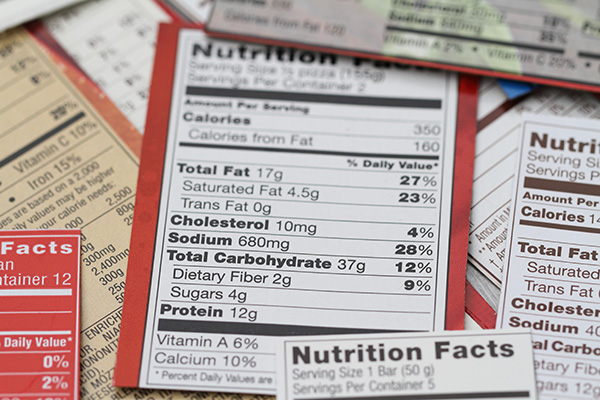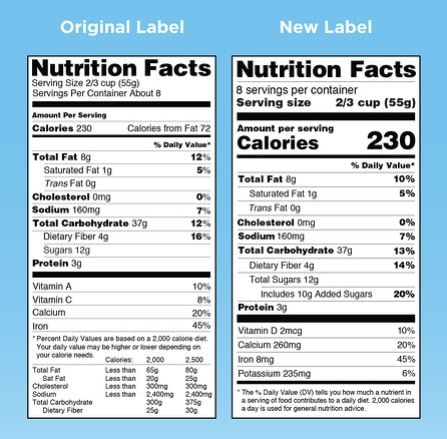

Decoding the updated nutrition facts label
It’s been three years since the U.S. Food and Drug Administration (FDA) announced updates to the Nutrition Facts label on packaged goods.
In the time that’s passed, many manufacturers have started implementing the changes, while others are still in the process. With the January 2020 compliance date for most manufacturers quickly approaching, the new version of the label is appearing on more food and beverage products every day. Examining what has changed and why, and understanding how to interpret and use the Nutrition Facts label, can help consumers make more informed decisions when purchasing and consuming food and beverage products.
How the Nutrition Facts Label Has ChangedWhile the old and new labels have a similar look and contain much of the same information, the new label is based on updated food consumption data, nutrient recommendations, the 2015-2020 Dietary Guidelines for Americans, and consumer behavior trends.
Following are important changes to the label.
- Calories and serving size are in a larger, bolder type.
- Servings per container appears larger on the label.
- Serving sizes have been updated to more accurately reflect what people typically eat or drink.
- For some food products, you may see nutrition information per serving and per package on the label.
- Calories from fat is not required because research shows that the type of fat consumed is more important than the amount.
- Sugars is now listed as Total Sugars and includes naturally-occurring and added sugar.
- Added sugars are required to be listed in grams and as a percent Daily Value (%DV).
- The actual amount (in milligrams or micrograms) and %DV of Vitamin D and potassium are now required on the label.
- The amount of calcium and iron is now required in addition to the %DV.
- The DV for nutrients like sodium, dietary fiber, and Vitamin D have been updated based on newer scientific evidence.
- The footnote has changed to better explain the meaning of %DV.
- Vitamins A and C are no longer required on the label.

Why the FDA Made These Changes
The current Nutrition Facts label has been used on packaged foods and beverages for more than 20 years. While it contains helpful information, new scientific information related to nutrition, public health, and the dietary recommendations indicated it was time for a makeover.
The updated label design and nutrition information is intended to help Americans make more informed food choices that contribute to a long-term healthy lifestyle and reduce the risk of diet-related chronic diseases, including heart disease, type 2 diabetes, and obesity.
Where to Find Additional Resources
Need clarification on what constitutes added sugars or what types of non-digestible carbohydrates are considered a dietary fiber? IFT can help. To assist you in understanding the changes and sharing information more broadly about the new nutrition label requirements, access IFT’s online toolkit for detailed information and links to related webcasts, as well as easy-to-share videos and social graphics.
FDA. 2019. “Changes to the Nutrition Facts Label.” https://www.fda.gov/food/food-labeling-nutrition/changes-nutrition-facts-label
